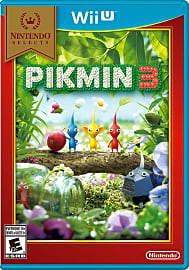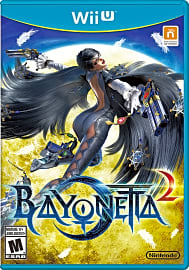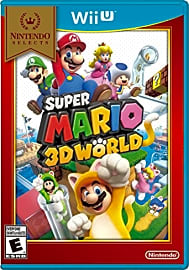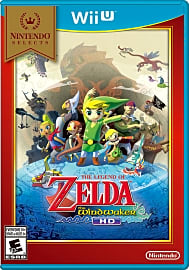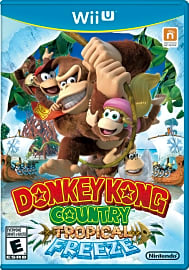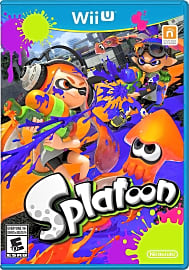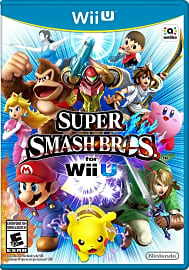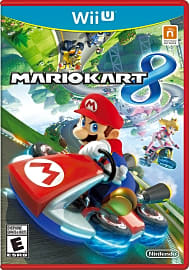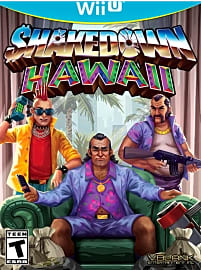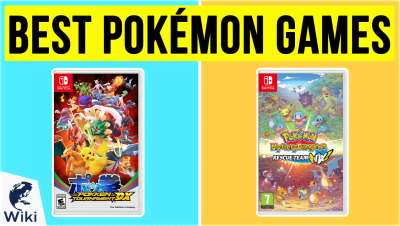The 10 Best Wii U Games

This wiki has been updated 34 times since it was first published in January of 2017. Just because the Wii U only supports games either made by, or created in collaboration with, Nintendo, doesn't mean there aren't some real knock your socks off, in your face, addictive titles that you and your friends will want to play nonstop for hours on end. We've forgone food and showers over the last few days of marathon gaming sessions to determine which are the very best. When users buy our independently chosen editorial choices, we may earn commissions to help fund the Wiki.
Editor's Notes
January 18, 2021:
Released in 2012, the Wii U is backward compatible with all Wii software and accessories, allowing access to a large back catalog of games. Of course, many original titles were launched either on physical media or digitally through the Nintendo eShop. Although trying to compile a list of the best games will always be subjective, if we take copies sold as a metric, then the most popular game is Mario Kart 8 with over 8 million sales. Obviously, Nintendo's own Mario franchise features heavily in the list too, with Super Smash Bros. and Super Mario 3D World selling over 5 million copies each.
In 2017 the Wii U was discontinued, as its replacement, the Switch was released. However, Nintendo continued to release physical titles up until August 2020 when the final game Shakedown Hawaii Special Edition was made available in North America. This was a special release with only 3000 copies being printed and comes with a hard case and alternative artwork.
March 14, 2019:
The Legend of Zelda: Breath of the Wild made its debut on the list, which unfortunately forced us to bump Minecraft off of it. To be sure, it's still a fun and addictive game, but this particular version simply isn't on par with others. Pikmin 3 is a big hit thanks to a game engine that makes it equally fun for little ones and grown-ups alike; plus, it's a welcome respite from all the Mario-based titles. Splatoon would likely have ranked higher had it not been for its lackluster local play. Users may be surprised to see the beloved Mario Kart 8 at a relatively low spot, but the bland battle mode limits its replay value.
A Brief History Of The Wii
Nintendo now has its own, large section of the video game market, carved out just for them.
Nintendo was once the 800-pound gorilla in the video game world, but by the turn of the 21st century, Sony and Microsoft had begun to horn in on the market with the release of the PlayStation and Xbox, respectively. Nintendo's prior entry into the console world, the GameCube, had been a disappointment, and it looked to many like the company had lost its touch.
They needed to do something to get back in the game, and luckily they had an ace in the hole: the Wii.
The company realized that engaging in a competition with Sony and Microsoft to release the most powerful console in the world was a losing proposition. Instead, what they needed was a completely different kind of gaming system altogether, one that encouraged multiple users to play in-person.
Beyond encouraging social play, Nintendo had another objective in mind. Conscious of public backlash against gaming in general, which was seen as contributing to the obesity epidemic, they wanted a system that would promote physical activity.
This necessitated a new controller, one that couldn't be used while glued to the couch. The solution Nintendo came up with was a dual-control system, using a remote and a nunchuk-inspired device. These machines were able to capture the user's physical movement, and games for the system relied on players mimicking real-world motions.
Upon the Wii's release in 2006, critics initially dismissed the new controller setup as gimmicky and unwieldy, but the public had a much different reaction. It was immediately a hit, as many hardcore gamers wanted to experience this brand-new way of playing.
The biggest impact the Wii had, however, was its impact on casual users. People who didn't ordinarily play video games found this console to be intuitive, engaging, and most of all, really fun. It was even a centerpiece at many parties, drawing attention from people of all ages.
Not only was Nintendo able to move a massive amount of these units, but they were able to draw in third-party developers who had drifted away from the company. In the end, Nintendo didn't just reclaim their slice of the video game pie — they actually increased the size of the market.
The newly-rejuvenated company built upon their success with the Wii U in 2012, which added a touchscreen and directional buttons to the controller, and the Switch, which combined a handheld console with a standalone model. Nintendo now has its own, large section of the video game market, carved out just for them.
Not bad for a company that started out with just a couple plumbers and a temperamental lizard.
How To Build The Perfect Game Library
Just buying a Wii isn't enough to make your next party a huge success. You also need to find some games that everyone will want to play — or watch.
Of course, you're not only going to play the thing at parties, and that should be one of your guiding questions when trying to find a game: do you want one that's fun to play alone, or just with friends?
Given a little bit of time, you'll be able to build a collection that's the envy of everyone on the block.
There's a wide variety of titles for each scenario, but you should attempt to build a library that balances both options. You'll want to have something for when a friend drops by unexpectedly, but you'll likely do the bulk of your gaming alone — or connected to the internet, of course.
Try to have a mix of kid-friendly fare and titles that are more appropriate for an older audience, as well. Since this is Nintendo, you likely won't be able to find games that are too mature, but kids are still more likely to gravitate towards cartoon gorillas than angels and demons.
Don't limit yourself to just Wii U titles, either. The system is backwards-compatible, so you can still play all your favorite games from the original console. You can continue to add to your library, and view it as an investment, rather than a ticking financial time bomb.
Given a little bit of time, you'll be able to build a collection that's the envy of everyone on the block. It's up to you how much you want to share with them.
What Does The Future Hold For Video Games?
The Wii revolutionized the video game industry a few years ago, and it's hardly going to be the last time the market undergoes a sea change. While it's impossible to gaze clearly into the future, there are a few things that certainly look to be just over the horizon.
This would lead to a boom in independent content, which could cause an influx of fresh and new ideas.
The most likely change is a transition to cloud-based gaming. Physical consoles will go the way of the dodo, and games will be streamed directly from the internet. Not only does this free up space, it will also cut manufacturing costs, which should hopefully put money back into gamers' pockets (so they can buy more games, naturally).
The consoles that do exist will probably be improved incrementally, rather than having all-new models rolled out every decade or so. That allows for frequent updates to keep up with technological advances, without a super-expensive development process.
Virtual reality is already starting to become available, but it's likely that the market for VR games will grow as the technology improves. Expect the games to become more social and cooperative as more people begin to play, as well.
Large software companies may find themselves on the chopping block, as a new crop of talented engineers choose to launch their own studios rather than toil in corporate anonymity. This would lead to a boom in independent content, which could cause an influx of fresh and new ideas.
Regardless of what changes actually occur, the future of the industry looks bright, and we'll be there to greet it — right from the comfort of our couches.


